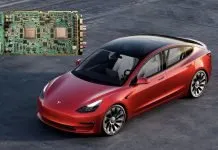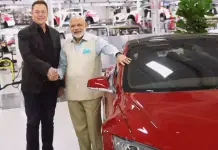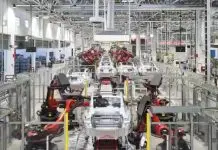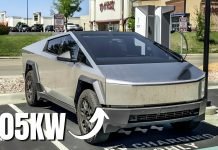In a tragic incident, four young people lost their lives in a deadly Tesla crash after reportedly being unable to exit the vehicle due to a failure in the electric door mechanism. This has raised a heated conversation about the safety of electric cars, especially Tesla’s. Electric vehicles like Tesla are generally considered safe and even score well in crash tests but some design choices may lead to some risks.

Tesla Accident Claims Four Lives After Electric Doors Jam Post-Crash
On October 24, 2024, an unfortunate incident occurred in Toronto, Canada where four young people burned in a burning Tesla Model Y after a crash into the pillar. The victims have been named as Neelraj Gohil, 25 years old, his sister Ketaba Gohil who was 29 years old, Jay Sisodiya, and Digvijay Patel. A fifth passenger, a woman in her early twenties, was very lucky to be pulled from the burning car through the window by a Good Samaritan.
The Tesla was said to be traveling along Lakeshore Boulevard when the driver lost control and crashed into a guardrail before hitting a pillar. This caused an explosion effect making the extremes of the vehicle catch fire quickly.
Rick Harper, a Canada Post employee who happened to be at the scene, wanted to help. He saw one of the cars blow up, and then he took a metallic bar and broke one of the car’s windows for the only survivor to come out. The woman crawled out of the car headfirst after breaking the window first. Harper said that he was unaware of other passengers still stuck inside because of excessive smoke, which prevented him from seeing clearly.
“I suppose the girl would have tried to open the door from the inside because she was pretty desperate to get out. I don’t know if it was because of the battery or something else. But she couldn’t get out,” said Rick Harper, the Canada Post employee who managed to get her out of the car.
An analysis of details from eyewitnesses revealed that the electronic door handles of the Tesla were not able to function when the emergency struck. The survivor said, according to one account, that he could not open the doors of the vehicle from inside. Crash authorities are asking whether the lack of power on the Tesla during an incident was responsible for not unlocking the doors since all the Tesla door handles require electrical power to unlock. This has raised lots of questions about the safety design of electric cars, especially during an emergency event.
This case has made people think about other issues that have been raised earlier about door locks through the Tesla electronic door systems. In earlier occurrences, cases of people being locked inside their Teslas have been presented with door problems in their automobiles during emergencies.
For instance: The same year, a man burned to death in a Model S because the car’s doors could not open because of faulty auto-retracting handles.
A man from Vancouver had to beat one of the windows of this Model Y in 2022 as it was on fire. Another concern has been raised by some professionals stating that there is an embedded safety feature in Tesla Cars that people are unaware of and sometimes it may not approach high-stress situations for example manual overrides for a door locking system. Currently, the National Highway Traffic Safety Administration (NHTSA) continues to investigate several safety concerns concerning numerous Tesla models, including the door.
Police are carrying out a thorough investigation in regard to the crash that led to the fire. Transport Canada is implicated in evaluating the occurrence as well as Tesla’s vehicular safety conceptualization. However, in regards to this case bringing out these unanswered questions, they hold the public exigency towards safety standards of electric and the mode of handling emergency responses when it comes to electrical vehicles.
Conclusion
The loss of four young lives in this incident brings fundamental and vital questions about the safety of electric vehicles and some of the lifesaving mechanisms. Self-driving cars are bound to cause further inquiry and may have some effects on regulatory requirements for vehicle safety and the manufacturers.


















